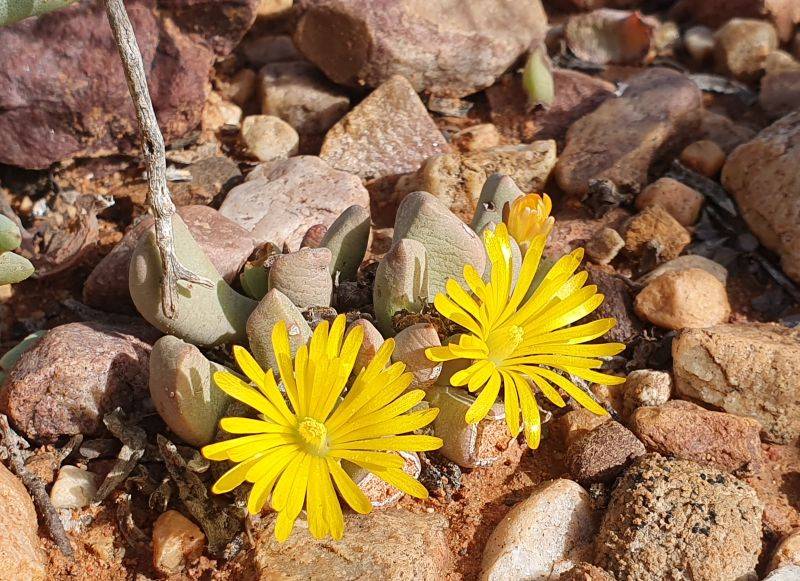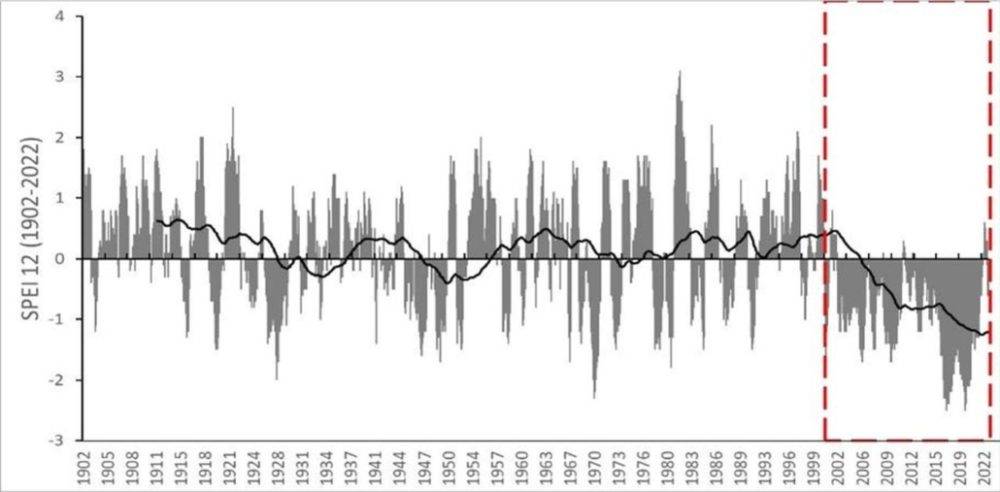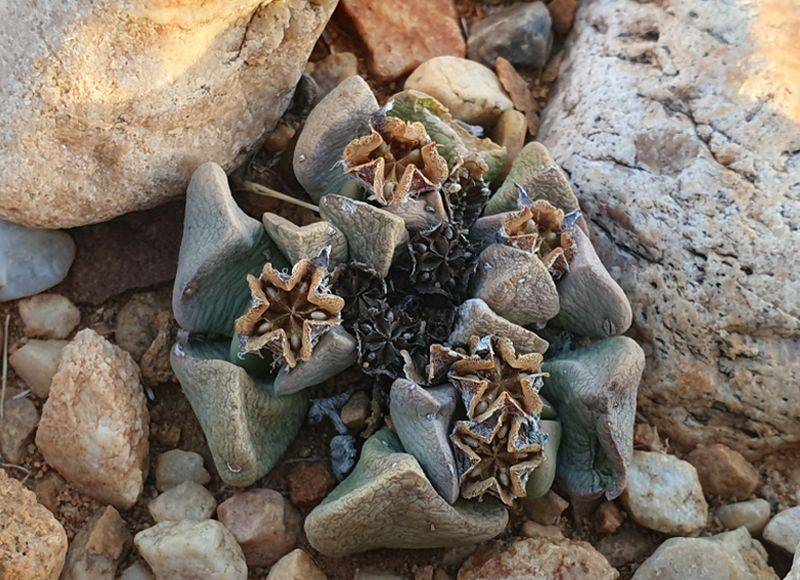
Grazing and plant poaching are additionally components resulting in the uncommon Prince Albert vygie dwindling. (SAEON)
Drought and warming might trigger a decline in dwarf succulents such because the endangered Prince Albert vygie, which is additional affected by intense grazing and unscrupulous succulent collectors.
Populations of the endemic species discovered within the Prince Albert area of the Western Cape have declined over the previous 20 years, researchers on the South African Environmental Remark Community (Saeon), have discovered. Saeon is a long-term environmental statement and analysis facility of the Nationwide Analysis Basis.
The Prince Albert vygie (Bijlia dilatata) is listed as endangered on the Crimson Listing of South African Vegetation of the South African Nationwide Biodiversity Institute’s Threatened Species Programme. It’s described it as a “range-restricted species occurring at three to 5 places and declining as a result of ongoing habitat loss and degradation”.
Particulars of those websites are “particularly saved imprecise due to the danger of plant poaching that’s rife” within the Succulent Karoo area, wrote researchers Sue J Milton, an arid lands node analysis affiliate at Saeon who relies on the Wolwekraal Conservation and Analysis Organisation in Prince Albert, and Helga van der Merwe, an arid lands node scientist.
The researchers mentioned their findings assist predictions that warming, or the mix of drought and warming, might trigger a decline within the populations of dwarf succulents akin to B. dilatata.
“Though the species spans an altitudinal vary of solely 300m, it’s doubtless that the upper elevation would supply a secure refuge from temperature will increase related to local weather change and higher-elevation websites ought to be included in protected space networks,” the researchers discovered.
In 2002, varied populations of this species had been surveyed throughout an elevation gradient — much like a slope — they mentioned. Subsequent surveys had been carried out in 2020 and 2021, throughout an intense drought interval, and once more in 2023 after drought-breaking rains, to evaluate the situation of the populations.

Bijlia dilatata inhabitants tendencies throughout varied websites had been investigated by way of rainfall, elevation, microsite and land use. The researchers famous that a sign of the severity of the drought may very well be gained by utilizing the Standardised Precipitation Evapotranspiration Index, which takes under consideration each rainfall and potential evapotranspiration decided by temperature.
“These information present that the latest drought within the Prince Albert space was notably extreme,” wrote Milton and Van der Merwe. “We discovered a fourfold distinction in B. dilatata inhabitants density declines amongst websites over the two-decade examine interval.”
These modifications had been defined by elevation, with higher-elevation websites cooler than low-elevation websites and sustaining a better relative humidity for longer after rain in shaded microsites, the researchers mentioned.
However different components influencing the standard of a microsite can even affect a plant’s skill to outlive an exceptionally sizzling and dry interval, they famous.
“Grazing depth [no grazing, grazing or heavy grazing] was not discovered to considerably have an effect on inhabitants dimension, nevertheless, there was a unfavourable impact on populations. Microsite variations are affected by grazing depth by decreasing shade produced by nurse vegetation and due to this fact growing temperature.”
Grazing, too, can straight affect vegetation when components of them are eaten by an animal or they’re trampled. In any respect the websites, younger people had been dominant in 2002 however modified to a dominance of medium-sized people over time.
Moreover, many of the useless vegetation had been discovered within the smallest dimension class whereas bigger people had been extra more likely to survive. No lately recruiting people had been encountered throughout the 2023 surveys that adopted good drought-breaking rains, “due to this fact, recruitment failure could have additionally performed a task within the noticed inhabitants modifications”.
Recruitment refers back to the course of by which new vegetation discovered a inhabitants or are added to an current inhabitants.
Attainable causes for this failure to recruit might embrace a depleted seed financial institution due to poor flowering and/or seed set earlier than the 2023 surveys. Greater than half the inhabitants occurred in shaded microsites related to rocks or reside or useless nurse shrubs (nurse shrubs are bigger shrubs which they depend on to outlive and reproduce).

These people had been additionally bigger than these present in open microsites.
“Nurse shrubs had been severely impacted by the previous drought, with 42% of those shrubs having died by the point of the 2023 survey,” they wrote, including that this massive die-off of shrubs was additionally reported by one other examine carried out within the area.
Intense grazing additionally removes the shrub cowl that dampens warmth and humidity results.
“Declining populations of specialist succulents are additional impacted by unscrupulous succulent collectors that take away them from their pure habitat,” the researchers mentioned.